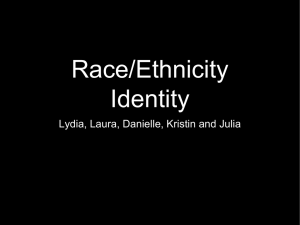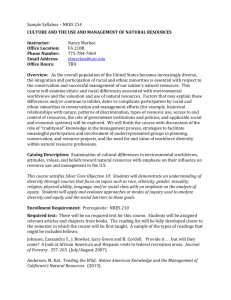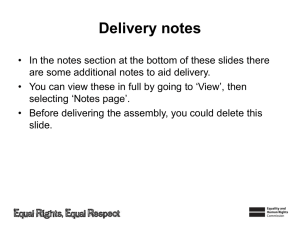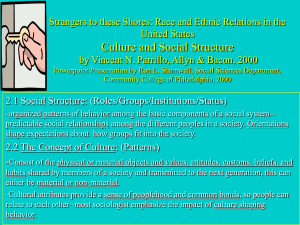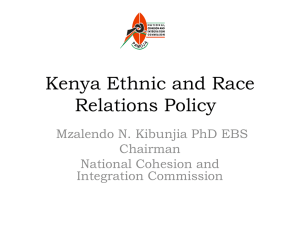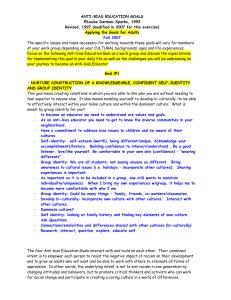Silence is a powerful statement handout
advertisement
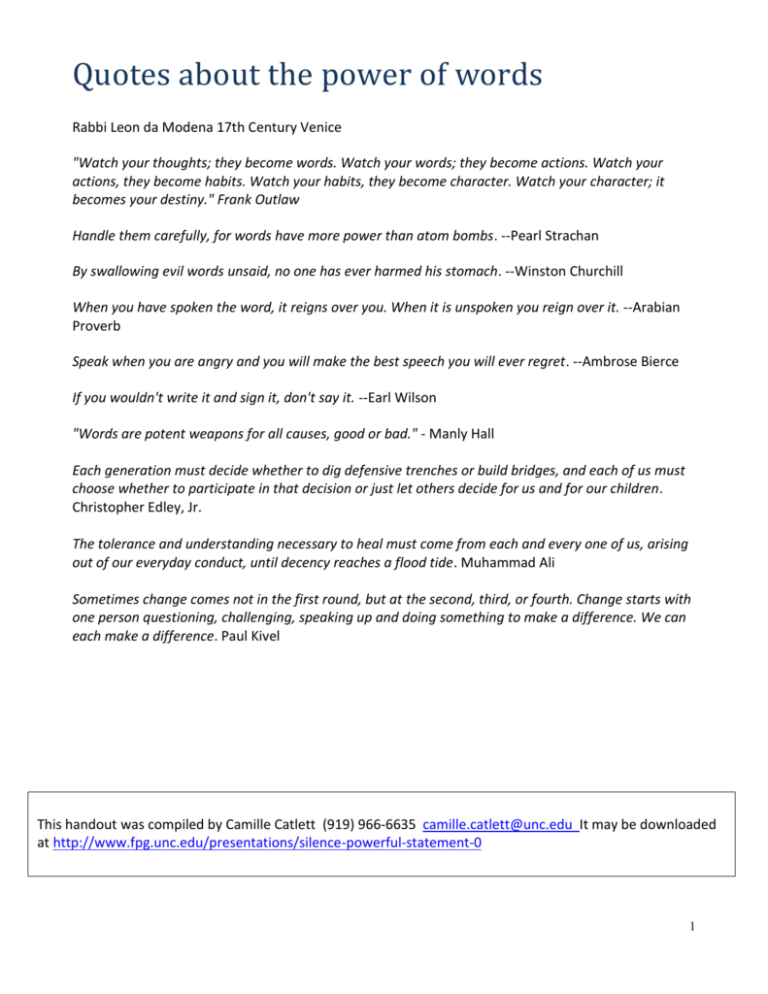
Quotes about the power of words Rabbi Leon da Modena 17th Century Venice "Watch your thoughts; they become words. Watch your words; they become actions. Watch your actions, they become habits. Watch your habits, they become character. Watch your character; it becomes your destiny." Frank Outlaw Handle them carefully, for words have more power than atom bombs. --Pearl Strachan By swallowing evil words unsaid, no one has ever harmed his stomach. --Winston Churchill When you have spoken the word, it reigns over you. When it is unspoken you reign over it. --Arabian Proverb Speak when you are angry and you will make the best speech you will ever regret. --Ambrose Bierce If you wouldn't write it and sign it, don't say it. --Earl Wilson "Words are potent weapons for all causes, good or bad." - Manly Hall Each generation must decide whether to dig defensive trenches or build bridges, and each of us must choose whether to participate in that decision or just let others decide for us and for our children. Christopher Edley, Jr. The tolerance and understanding necessary to heal must come from each and every one of us, arising out of our everyday conduct, until decency reaches a flood tide. Muhammad Ali Sometimes change comes not in the first round, but at the second, third, or fourth. Change starts with one person questioning, challenging, speaking up and doing something to make a difference. We can each make a difference. Paul Kivel This handout was compiled by Camille Catlett (919) 966-6635 camille.catlett@unc.edu It may be downloaded at http://www.fpg.unc.edu/presentations/silence-powerful-statement-0 1 Speak Up 2 Overview: Development of Ethnic, Gender, Disability, & Class Identity & Attitudes in Children & Youth Knowledge of the developmental process can guide us in knowing when, how, what, or to what depth to provide guidance. By 6 months: children find skin color and gender differences interesting By 18 months: many toddlers can correctly place a photograph of themselves in their racial/ethnic group, and some can select their own picture correctly in response to a group label. However, they cannot do either of these tasks consistently for pictures of other people. By 2 years: children are not only noticing, they are also curious about and asking questions about differences. These questions reflect both children’s individual life experiences and their cognitive stages of development. Between 2 ½- 3 ½: children also become aware of and begin absorbing social prevailing negative stereotypes, feelings and ideas about people, including themselves. Children may show discomfort or dislike or fear toward a person whose skin color is darker than their own, or who speaks a different language, or who has a physical disability. They may tease or refuse to play with a child because of the skin color, gender, or how one dresses or talks. By 4 years: children are seeking labels for racial/ethnic identity and they have their own theories about what causes a disability, skin tone, and gender. Adult verbal and non-verbal responses dramatically influence this. Ways of being alike and different and they will make their own conclusions about the way of the world if not guided through the process. Preschoolers have a very limited understanding of social-class differences. However, studies show that preschool-aged children assume that rich people are happier and more likable than poor people. And, when asked, these children insist that it is not fair that some people have more money than others and suggest that the rich should share with the poor. By 5 years: children have developed a core sense of racial/ethnic identity and begin to explore what it means to be from one race compared to another. As they settle into their racial/ethnic identity, societal bias can undermine their self-esteem and ability to build a positive identity within their ethnic group. 3 By 6 years: early elementary school children are likely to both describe and explain poverty and wealth in observable concrete terms, such as number of possessions and type of residence. By 6, 7, and 8 years: children continue to construct and elaborate on their ideas about their own and other’s racial/cultural identities and their feelings about human differences. Their development during the primary period goes beyond an individual identity to also include a group identity. They also understand that their identity includes many different aspects (gender, ethnicity, and class) and are interested in learning about their ethnic group, especially through oral histories and written biographies. They have also developed cognitive skills necessary to analyze their own ideas and begin to understand the influence of socially prevailing stereotypes on them. (I am a girl, I am Catholic, I am Black, I am rich) During childhood and adolescence, children increasingly make the connection between having a job and getting money and learn more about the status and financial benefits associated with specific occupations. When they are about 10 years of age, children begin to refer to psychological traits, such as motivation, in their explanations of why people are in different circumstances. At this age, children advocate for equalizing the wealth between rich and poor. By 9 or 10: attitudes have solidified. At this point children’s racial/ethnic attitudes tend to stay constant unless the child experiences a life-changing event that consistently challenges them to rethink their beliefs. By 11 or 12: continue to be interested in and aware of world events. They are interested in ancestry, history and geography. They are better at “perspective taking” by this age too. They can also understand racism now and can use skills to take social action. By adolescence: are capable of seeing the role of the social and economic structure in the unequal distribution of wealth. However, these children are more likely to justify inequalities by claiming that poor people get what they deserve (e.g. “they didn’t work hard enough”). That is to say that, by adolescence, they tend to accept unequal distribution of wealth and blame poor people for their poverty. Our task then is to help children see and critique how our economic system perpetuates economic advantage and disadvantage. Throughout the remainder of childhood and into and throughout adulthood, individuals continue to get messages that reinforce already formed attitudes and beliefs. They also act on their attitudes and beliefs as they continue their journey through life. Hopefully, they also work on raising their own consciousness and questioning those previously held beliefs. Through experiences such as reading, reflecting, and talking with others, they are able to slowly change negative beliefs and patterns of behaviors and work toward more accepting and just relationships and interactions. Julie Bisson compiled this information from a variety of sources including Louise Derman-Sparks et. al., 1989; P. Katz, 1982; K. Clark, 1955; C. Pierce, 1980; W. Cross, 1987; and Ramsey, 1998. 4 Anti-Bias Teachable Moments Description Anti-bias teachable moments are incidents, events, conflicts, comments, or interactions that tell us what children (youth, and adults) are thinking and learning about diversity. They are opportunities to expand children’s (youth’s and adults’) thinking and correct misinformation they may have about diversity. Teachable moments also guide us in planning anti-bias activities that are appropriate and meaningful for children (youth). Here are some examples of teachable moments: Two European American children are playing in the block area. When an African American child tries to join in the play, the other children respond by saying “No, you can’t play. Only children with white skin can play here.” Four year old Robert and four year old Bethany and Lisa are in the dress-up area. As Robert puts on dresses and high heeled shoes, the girls laugh and say, “Look at Robert! He’s a girl!” On his first day of school, a four year old boy points to a classmate who uses a wheelchair and asks, “Why is that girl in a wheelchair?” When making gifts for Father’s Day, 5 year old Emma says, “I don’t have a daddy at my house. I have two mommies.” Another child responds, “Nobody has two mommies.” Guidelines Below are some guidelines for handling teachable moments. When using these guidelines, it is important to take into account the diverse cultures and cultural values and beliefs of children and families we are working with. Specific strategies will vary from person to person and program to program. A central challenge is to continually develop our awareness of how children and adults communicate and learn and of what cultural factors influence them in doing so. You may not use all of these steps and you may not use them in the order presented. Alter and adjust these guidelines so they are appropriate for the children (and youth) you work with as well as for the situation. 1. Don’t ignore what occurred. Not responding implies that we agree with and approve of what happened or what was said. Also, by ignoring questions we don’t give children (and youth) 5 the information they want and need to develop positive identities and comfortable interacting with those who are different from them. 2. Respond in some way. Use strategies that are comfortable for you and the child (ren) (and youth). Talk with children (and youth) one on one, in a small group, or when all together, such as at a group time. Use the method that is the best fit for the situation and those involved. 3. Ask questions to clarify what was said/what happened if you are not sure. Use questions such as “What did you mean by that?” or “Why did you say that?” to be sure that you know what the child (or youth) is asking or saying. 4. Answer questions simply and honestly. Don’t over answer. 5. Set boundaries if necessary. Reinforce any rules or agreements you have about not excluding or teasing others based on the way they look/talk/act, etc. 6. Comfort children (youth) whose feelings were hurt. Express empathy. Tell the child (youth) you are sorry about what was just said. 7. Support the “victim” in taking action if she/he wishes. Follow the child’s (youth’s) lead. She/he may want to talk to the child (youth) who made the hurtful comment about how that felt. 8. Help problem solve the underlying reason for the conflict (if there was one) with the children (youth). 6 Intervening When Bias Occurs 1. Do a pulse check/heart check/head check. o How is this situation making me feel? o What is my bias in this situation? o What do I want to have happen? 2. Do an environmental check. o What societal images and messages are influencing the children in this situation? o Is this setting conducive for discussion? o How will on-lookers be impacted? 3. Do a developmental check. o What developmental tasks are at work for the children here? o What can I say to affirm the identity of each person involved and acknowledge what might be true for each person? 4. Model empathy and empowerment. o o o o o How can I investigate rather than interrogate? What will acknowledge the feelings of each person involved? What understandings of “fairness” can I build on here? Can I relate this to any model for activism? What will empower the victim of this bias (if there is one)? 5. Make a mental note for follow-up plans. o What images, materials, or activities can I add to our classroom or home environment to counter this bias? Adapted from: Training Teachers: A Harvest of Theory and Practice by Margie Carter and Deb Curtis. 7 References Bilson, J. (1999). Overview: Development of ethnic, gender, disability, & class identity & attitudes in children and youth. (unpublished handout) Derman-Sparks, L. & Olson Edwards, J. (2010). Anti-bias education for young children and ourselves. Washington, DC: National Association for the Education of Young Children. Mazel, E. (1998). “And don’t call me a racist!” A treasury of quotes on the past, present, and future of the color line in America. Lexington, MA: Argonaut Press. http://ellamazel.org/yellowbook/about.htm Teaching Tolerance. (1997). Starting small: Teaching tolerance in preschool and the early grades. Birmingham, AL: Southern Poverty Law Center. http://www.tolerance.org/kit/starting-small Teaching Tolerance. How to implement ‘Speak Up At School’ (includes free video clips) http://www.tolerance.org/supplement/how-implement-speak-school Teaching Tolerance. Speak up at school: How to respond to everyday prejudice, bias and stereotypes: A guide for teachers. Birmingham, AL: Southern Poverty Law Center. http://cdna.tolerance.org/sites/default/files/general/Speak_Up_at_School.pdf What would you do? http://www.youtube.com/watch?v=MFn81_HAvWg Wolpert, E. (2005) Start seeing diversity. St. Paul, MN: Redleaf Press. York, S. (2003). Roots and wings. (Revised Edition). St. Paul, MN: Redleaf Press. 8 9


